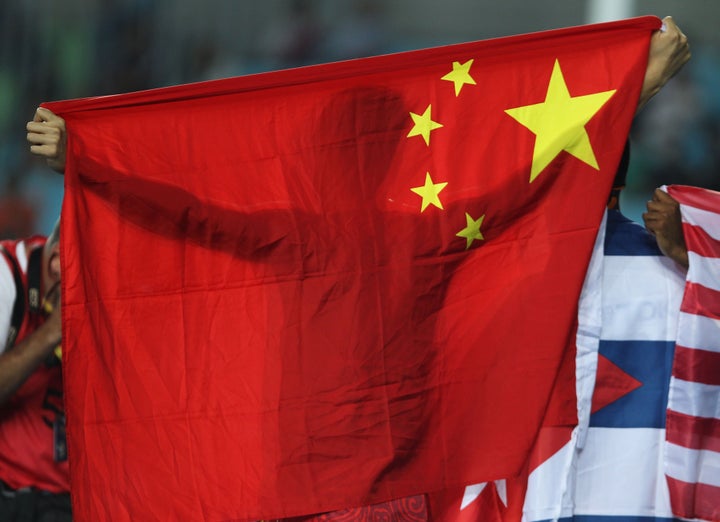
A new forecast by the International Monetary Fund predicting slower economic growth is providing some tough love for the global recovery. But a new highway linking Peru's Pacific ports with the Amazon and China's strategic investments in Brazil, Argentina and Colombia could provide a silver lining for Latin America's economic future.
China's version of dollar diplomacy is helping to insulate Latin economies from the crisis. But it's also creating disputes over dumping, energy policy and technology that are similar to those that exist between Latin nations and the United States.
Seeking to put more of its own spin on global affairs and provide counterspin to offest coverage generated by CNN, the BBC, the Voice of America and other U.S .public diplomacy outlets, official Chinese media is expanding its footprint in the southern hemisphere.
To make this happen, China has entered into a strategic partnership with Bandeirantes, one of Brazil's major multimedia companies. A YouTube video featuring China's ambassador to Brazil does not provide financial details of the arrangement.
China Central Television (CCTV) now makes São Paulo the headquarters for its Latin American operation. Recently, several additional journalists and staff from China's "big three," which includes CCTV, Peoples' Daily and Xinhua news service, were added to the São Paulo contingent.
The expanded coverage is an example of how China shape-shifts content delivery to support its global policy initiatives on a broad spectrum of issues including currency, defense, development, energy, food security and technology. Content produced out of São Paulo can be fed to CCTV viewers in Mandarin, Arabic, English, French, Spanish and Russian.
While Chinese capital is helping create upward mobility in South America, a recent Pew Charitable Trust poll indicates people are falling out of the middle class in the United States. America's newspapers of record, seeking to economize and weather the crisis, are reducing their coverage of the region.
The Washington Post has closed its Brazil foreign bureau, moving operations to Colombia, where U.S. troops and advisers help maintain political and economic stability. The New York Times online offers a few bylined features from Rio and Buenos Aires each month on its Americas page.
Having a big listening post in the southern hemisphere enables China to generate content spotlighting the region's growing middle class that helps motivate working Chinese who struggle for a higher standard of living in economically challenged regions outside the booming high tech, manufacturing and financial zones.
It's a lot easier for Chinese to aspire to middle class status watching news about Brazil's work hard-feel happy economy because it requires roughly one third the income needed to make it there than it does in the United States.
A recent survey by a São Paulo research organization defined the starting income for Brazil's middle class as 27,500 reals per year ($17,770 at current exhcange rate) while in the U.S. average median family income is $46,000. Although some traditional communist party officials bristle at the use of the term "middle class," think-tanks define the low end of the Chinese middle class starting at an annual income of around 65,000 yuan per year (about $10,300 at current exchange rates).
In the U.S., where coverage is often critical of China's policy on internet democracy and the dollar-yuan exchange rate, Beijing shape-shifts its content delivery strategy and pays for its own propaganda.
Harvard University's Nieman Journalism Lab has noted that China purchases substantial amounts of convincing advertorial content in the online edition Washington Post that appears across the page from articles by WaPo journalists. Revenue from China's advertising helps the Washington Post transition its online edition from a traditional internet newspaper into a social news vehicle that editors say gives readers more of what they want.
Ironically, while Hillary Clinton flames China's internet censorship policy, the absence of strong regulations in the sale of U.S. strategic software and cybersecurity technologies makes it easy for them to buy deep packet inspection,spyware and other product from U.S. companies identified by the Electronic Frontier Foundation that help Beijing control internet access and track digital democracy activists.
Long term economic conditions and fallout from the currency war could create a lot more negative news spotlighting divisions between the affluent and those who work as peasants in a Latin America that is still one of the world's largest low wage agro-export regions. Brazil, like China, has been raising interest rates to cool down inflation, causing the same post-Marxian class conflict that Beijing planners face at home.
In spite of being tagged as a communist nation, China has a high propensity for savings that helps Beijing underwrite its economic stratgy in Latin America. Brazil, now the world's fifth largest economy, and other nations in the region, meanwhile, show little propensity for the savings that is critical for nation building and transgenerational economic stability.
If a protracted currency war causes China's savings rate to take a nosedive, CCTV's Sao Paulo bureau might find itself broadcasting a game of high stakes Texas hold 'em in Uncle Sam's backyard.
